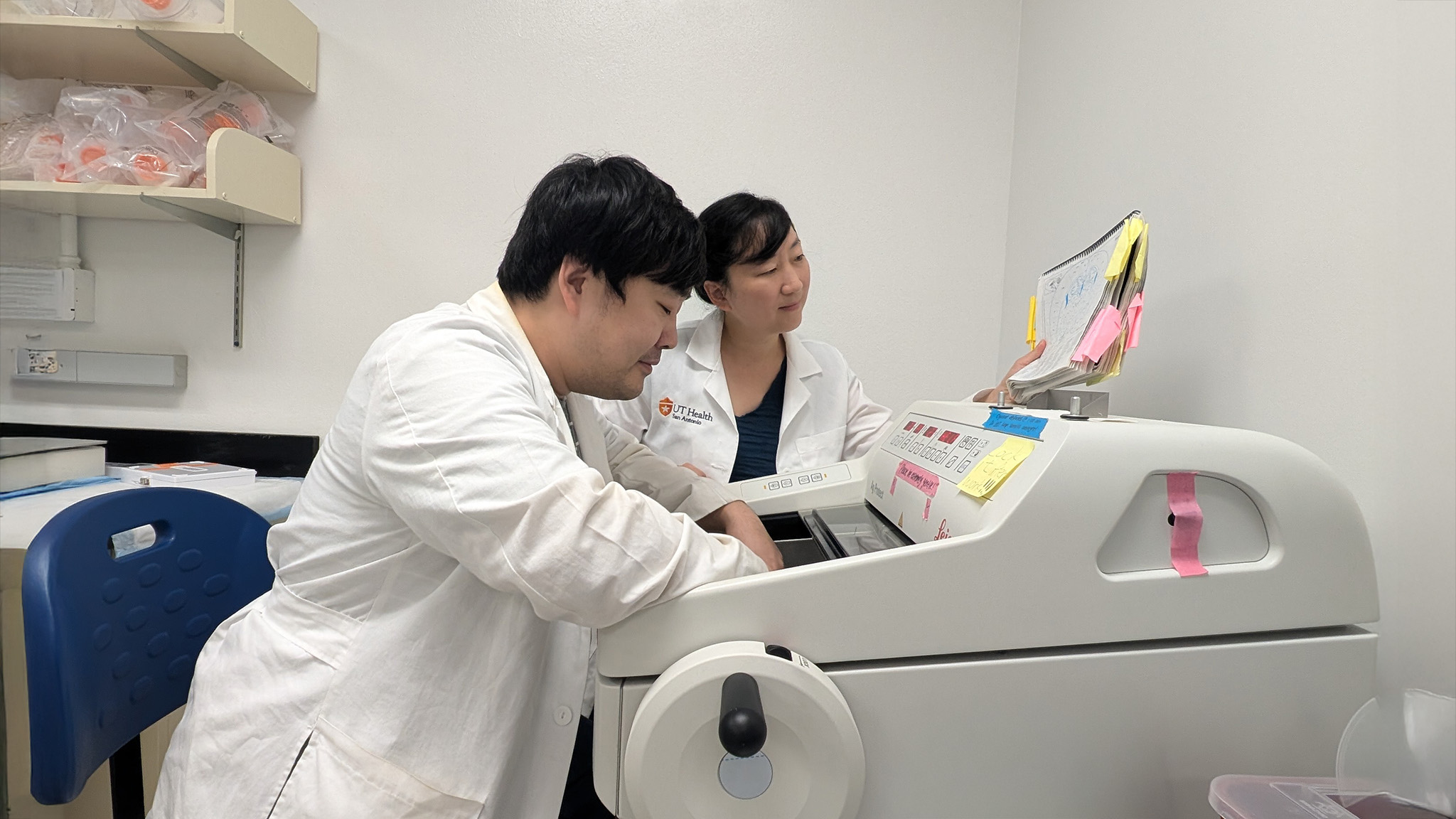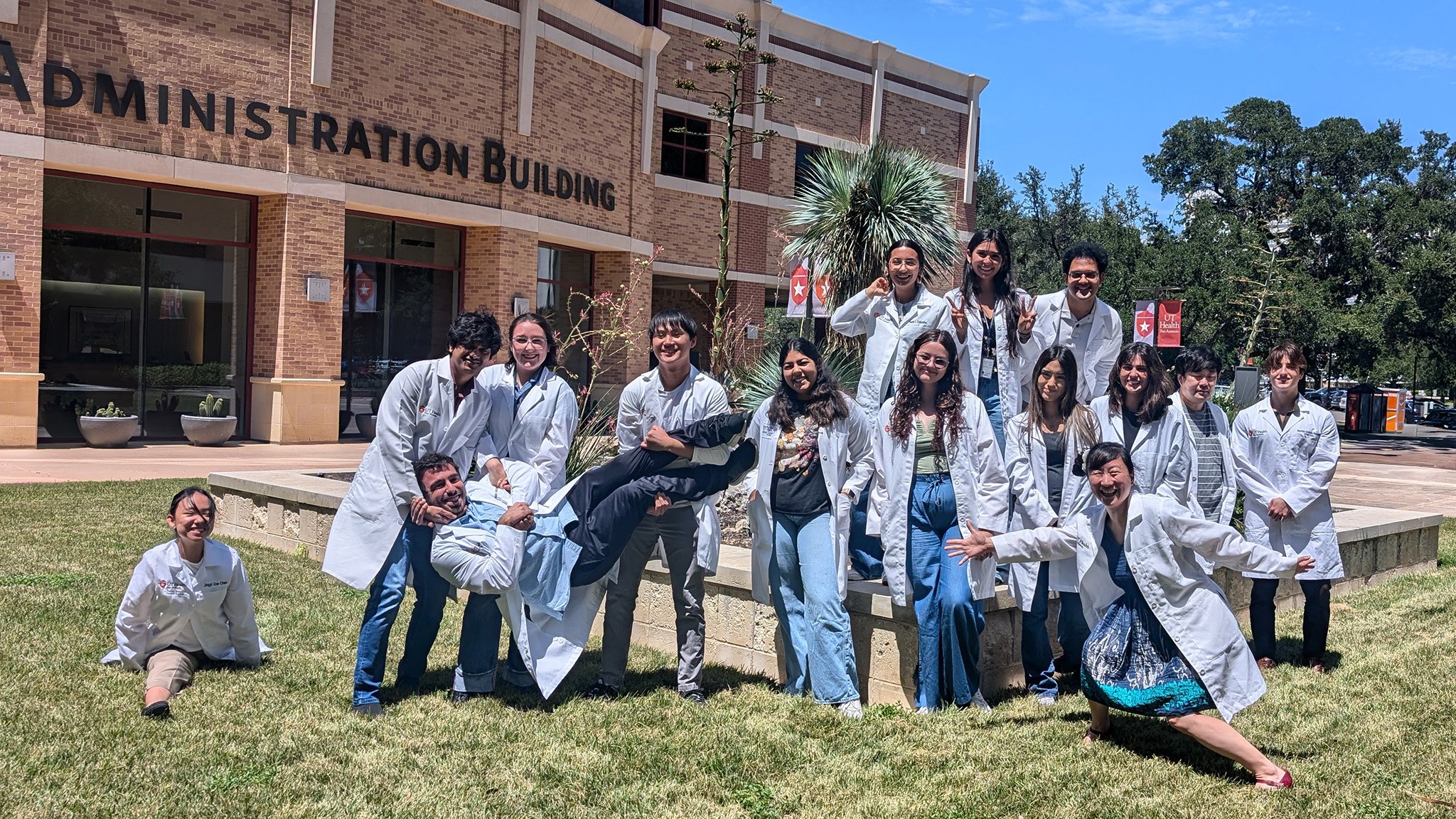Gene Therapeutic Development for Fragile X Syndrome

Hye Young Lee, PhD
Principal Investigator
Seo-Jun Kang, PhD
FRAXA Postdoctoral Fellow
University of Texas at San Antonio
San Antonio, TX
2025-2026 Grant Funding: $200,000
Supported through FRAXA’s Curative Therapies Fund
Summary
This team is pioneering a new gene therapy for Fragile X using mRNA-loaded nanoparticles. These tiny lipid spheres (ADP-LNPs) deliver healthy mRNA into brain cells, restoring the missing Fragile X protein or enabling precise gene-editing tools like Cas9. In early studies, ADP-LNPs were 7 times more effective than traditional delivery methods — an unprecedented breakthrough for brain therapeutics.
This project will test both protein replacement and gene reactivation strategies in Fragile X models. If successful, this same platform could be applied to other conditions like Rett syndrome, Angelman syndrome, or autism-related disorders with genetic causes.
The Science
by Hye Young Lee, PhD
mRNA-based gene therapeutics have the potential to revolutionize the treatment of genetic brain disorders such as Fragile X syndrome (FXS). However, complications with brain delivery have limited the utility of mRNA-based therapeutics. Although a variety of non-viral gene delivery vectors have been developed for transducing the brain, non-viral mRNA delivery in the brain is still less efficient than viral gene delivery and lacks the efficiency needed for human translation.
There is consequently great interest in developing new non-viral mRNA delivery vectors that can transfect brain tissue. Among several non-viral gene delivery vectors explored for delivering gene editing enzymes in the brain, lipid nanoparticles (LNPs)/mRNA complexes are perhaps the most promising because of their excellent biocompatibility, the well-established world-wide clinical track record, and their enhanced tissue diffusion capability.
The Lee laboratory has extensive experience delivering LNP/mRNA complexes to promote gene expression and gene editing in the brain. We recently demonstrated that a new family of LNPs with acid degradable PEG-lipids that hydrolyze in the endosome (termed ADP-LNPs) can deliver mRNAs to the brain with remarkable efficiency. ADP-LNPs have up to 20 times the amount of PEG on their surface than conventional LNPs, and this should allow them to diffuse through tissue better than conventional LNPs. Our results demonstrated that ADP-LNPs can deliver Cre mRNA and Cas9 mRNA/sgRNA to the brain with remarkable efficiency after an intracranial injection and were ~7 times better at editing cells than traditional LNPs. These results support the feasibility of using ADP-LNPs as potential gene therapeutics for genetic brain disorders.
We will use LNP-based delivery platform for mRNA delivery to the brain to develop a therapeutic strategy for FXS. Given our successful experience of mRNA delivery to the brain by ADP-LNPs, we aim to use ADP-LNPs to deliver mRNA to re-express fragile X messenger ribonucleoprotein (FMRP) with two strategies in FXS model systems. The central objectives are
- to re-express FMRP by delivering Fmr1 mRNA to Fmr1 KO mice using ADP-LNPs, and
- to reactivate FMR1 gene expression by shortening the CGG repeats in the FMR1 gene; by delivering Cas9 designed to shorten the CGG repeats in FXS iPSCs, FXS neurons, and Fmr1 CGG knock-in (KI) mice using ADP-LNPs.
Our central hypothesis is: ADP-LNPs will deliver mRNA for Fmr1 and for Cas9 to the brain and efficiently replace/edit/correct FXS causing mutations and rescue brain phenotypes from FXS.
Our proposed studies will develop a platform technology that will generate new therapeutics for FXS, and can be easily expanded to generate therapeutics for other autism related disorders caused by genetic mutations. The experiments represent the first time that ADP-LNPs can be used for delivering mRNAs to reverse symptoms of neurological disorders, and if successful, will pave the way for a wide variety of new mRNA-based therapeutics. This approach has tremendous potential as a platform for treating FXS.

